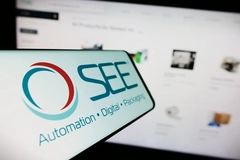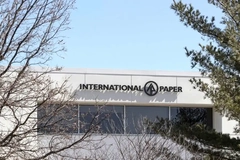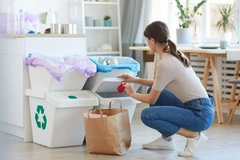Amazon extends pivotal Frustration-Free Packaging program into five major EU countries

05 Nov 2018 --- Amazon’s new Frustration-Free Packaging (FFP) incentive program has been extended beyond the US and Canada to now include France, Germany, Italy, Spain and the UK. The e-commerce giant is incentivizing vendors from these countries to send specific products to Amazon fulfillment centers in packaging that require no additional packaging or further preparation by offering one-time early adopter credit for every item that adheres to the new requirements before 1 October, 2019.
The aim of the FFP program is to reduce packaging waste and improve overall e-commerce efficiency. Amazon believes that the FFP program – which was for the last 11 years a voluntary scheme – will improve customer experience and lower the cost of delivering goods while improving sustainability.
The specific items currently included within the FFP program are as follows:
- Packages larger than 18x14x8 inches, or weighing 20 pounds or more.
- Consumables, durable goods, and soft goods.
- Items sold and fulfilled by Amazon.

item which adheres to the new FFP regulations
The incentive payment rates of US$1.00 per item (or US$1.99 chargeback for items which fail to meet FFP requirements), which is due to come into effect on 1 August, 2019 in the US and Canada, will also come into effect in the five mentioned EU countries on 1 October, 2019, at the equivalent currency value.
“We have reached a significant next step in Amazon’s packaging vision,” Virginie Maes, Vice President Corporate Strategy for Amcor, tells PackagingInsights. “Amazon is now pushing for the adoption of its standards in addition to encouraging voluntary adherence. The standards are clear and Amazon is showing that the smallest and biggest items can be packaged e-commerce ready by working with suppliers to showcase suitable examples.”
“Amazon has collaborated with a non-profit organization, the International Safe Transit Association (ISTA), to develop specific criteria that evaluate the ability of primary packaging to resist damage from various environmental forces,” she says.
“Packaged products – such as flexibles pouches or rigid containers – must pass the ISTA-6 simulation, a general simulation test for individually packaged products shipped through a parcel delivery system. Here, the packaged product undergoes dropping, vibration, temperature and humidity tests and, in addition, a test that ascertains if the package is designed to protect against damage, reduce waste, be recyclable and ship in its own container,” Maes explains.
“Foolproof” testing
Testing for e-commerce suitability has become more significant for packaging suppliers. For example, Amcor is investing in two International Safe Transit Association (ISTA) testing laboratories: one in the US and one in Europe, which will both be fully operational by May 2019. The ability to develop, test and certify primary packaging under one roof will accelerate the process of getting customers’ products e-commerce-ready quickly and cost-efficiently.
Amcor will test against specific criteria that evaluate the ability of primary packaging to resist damage from various environmental forces. Packaged products – such as flexibles pouches or rigid containers – must pass the ISTA-6 simulation, a general simulation test for individually packaged products shipped through a parcel delivery system. Here, the packaged product undergoes dropping, vibration, temperature and humidity tests and, in addition, a test that ascertains if the package is designed to protect against damage, reduce waste, be recyclable, be frustration-free, and ship in its own container.

Similar to Amcor, DS Smith now uses a “foolproof” testing method for distribution packaging called DISCS. This testing process measures the durability of a package against potential drops, impact, shocks, crushes and shakes.
A recent DS Smith e-commerce solution is the e@Box: an award-winning design which combines both primary and secondary packaging in a stylish, sustainable and protective single solution. PackagingInsights caught up with the e@Box designer, Quaas Volker of DS Smith, just before he collected the Deutscher – Verpackungspreis (German Packaging Award) for his design during FachPack 2018.
“The inspiration for the e@Box derived from different market trends in e-commerce. Two of the biggest trends are gifting and unboxing. We have a lot of different packaging solutions for e-commerce but we missed a special solution for unboxing only.”
“With the help of internal workshops, we have designed the e@Box, which can deliver a great WOW effect during the opening. The WOW effect is helping our customers to generate a high recognition effect for their brand and support the reselling of their products.”
“We are using only 100 percent recyclable materials – corrugated board materials,” continues Volker. “The design uses RightSize which allows us to avoid any void fill between the primary and secondary packaging solution. Therefore, the e@Box uses a minimal amount of material.”
“The e@Box is a perfect frustration-free packaging solution which conforms to Amazon’s new requirements. The design has no perforations, is tamper evident and is completely closed,” he adds.
“Endless possibilities” for e-commerce design
According to Virginie Maes, Vice President Corporate Strategy for Amcor, designing with e-commerce in mind should increase sales, improve brand reputation and create happy customers who receive orders quickly, safely, and in easy-to-open packaging.
“That doesn’t have to come at the expense of design,” she says. “Quite the opposite in fact – the possibilities of innovative packaging are almost endless when designing for e-commerce.”

sustainability: DS Smith's new e@Box
An example of this is Amcor's’ recently developed highly sustainable, unique polyolefin-based film that can be used for ambient and retort high-barrier applications. When used for pet food packaging, for example, it performs better in the online channel than cans and at a lower overall cost.
“While not every CPG has technical requirements that necessitate a redesign to ensure e-commerce suitability (temperature, fragility, etc.), there are some products that do: pet food, detergent, pasta sauce and shampoo are just a few examples,” she says.
“This focus on design (and redesign) for e-commerce is an industry priority and it’s no surprise that the big e-retailers, such as Alibaba, Amazon, and JD, are driving innovation in this area: implementing protocols that ensure packaging survives the e-commerce channel, without product damage or failure,” Maes concludes.
By Joshua Poole











